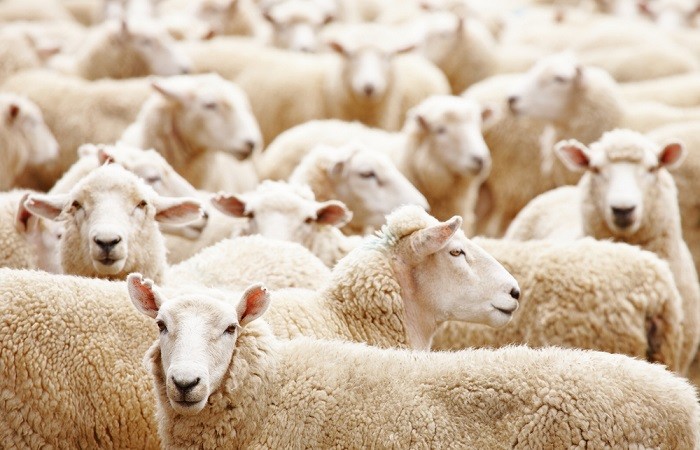

Sheep are the classical social “flocking animal”. They use the flock for a defense against predators, running away a short distance to form a flock and then turning round to face the predator. On closer approach they scatter and regroup.
Social ranking is not as obvious in sheep as in other species. Normally you will see very few confrontations among ewes without young lambs to fight over.
They work out a social order by head butting, nudging, poking with horns, shoulder pushing, blocking and mounting. This is seen most clearly in horned rams (American wild mountain sheep) who back off then charge meeting head to head with a large bang. Horned and polled rams should not be mixed as the horned ram will break the other’s neck.
Submissive behaviours include lowering of the head and neck and moving away with a head shake.
In wild sheep, a dominant ram leads a small flock followed by females, juveniles and lambs. He establishes this as a harem of about a dozen ewes.
Rams can form harems in farmed flocks in large hill country paddocks where they can easily get separated from main flock. Regular mustering is needed to prevent this.
In wild sheep, a lamb will stay with its dam till the next lamb is born. Both sexes will stay in their family groups till the adolescent males take off.
In farmed flocks you don’t see much evidence of social order, as regular mustering and movement prevent much of it.
In groups of rams, especially Merinos in hot climates with no shade, they stand in a tight pack creating shade for each other.
The Merinos is a breed that shows this pattern of packing tightly when being handled, and once in a tight circular mob, you have to get a leader to spin off somewhere and act as leader to get some movement.
This leader sheep is not of high social rank – it’s the first one who thinks they can escape. Pressure from barking dogs just makes the pack get tighter, and if you are in the middle of this crush, you can feel the physical pressure that can lead to a smother.
Merinos need room to move and hate hassle. They have different behaviour to other farmed breeds.
 Contact Jaguza Support
Contact Jaguza Support